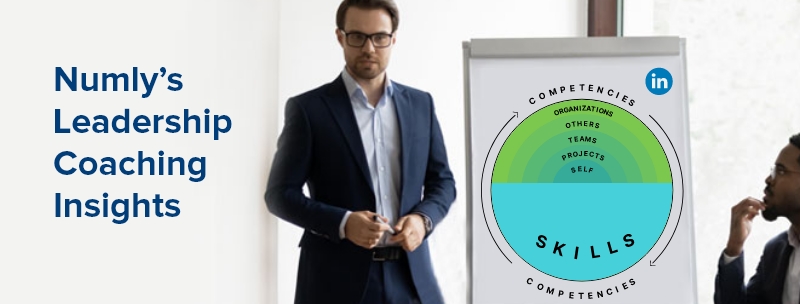Increasingly, organizations recognize the importance of prioritizing learning and development to onboard new employees, upskill the existing ones, introduce them to new tools and processes, and prepare them to contribute to the organisations success.
According to Statista, organizations spent over $826 to $1,700 per employee on training between 2015 and 2022.
However, there are limitations to the traditional learning and development approach.
- Lack of personalization: Organizations use a one-size-fits-all approach to learning and development. Employees are expected to complete specific training modules regardless of their existing skills and experience. This makes learning and development ineffective.
- Lack of motivation: Most employees don’t see any value in training or find it too monotonous. They eventually lose motivation and either complete the training without absorbing much or skip it midway.
- Limited practical exposure: Employees could lose interest if the content relies heavily on theory and provides little practical or actionable lessons.
- One-time exercise: Organizations often consider learning and development a one-time exercise, making the training redundant after some time. Employees must be trained regularly to ensure they are updated and ready to tackle future challenges of an ever-changing business landscape.
Clearly, organizations have to think beyond the traditional learning and development approach and embrace a more holistic and individualized approach to training employees.
One way to transform learning and development is by implementing coaching.
How to Make Learning and Development ‘Great’ with Coaching?
Coaching can be a great way to add more value to learning and development and make it more impactful. Let’s find out how.
- Personalizes Training
Unlike the one-size-fits-all approach of traditional learning and development, coaching takes a more personalized approach. It involves understanding the employees’ strengths and weaknesses and tailoring the training to bridge those gaps and align them with organizational goals. This makes learning and development more effective.
- Fosters Communication
Coaching is a two-way communication process between the manager (the coach) and the employee (the coachee), where the manager discusses career goals and areas of improvement with the employee and addresses their concerns. Managers should be more empathetic and provide a safe space for employees to share their ideas and concerns without fear. This fosters communication, builds trust between managers and employees, and motivates employees to be more engaged at work as they feel valued.
- Builds Practical Skills
Traditional training methods are theoretical. Coaching emphasizes more on practical skill development. Take on-the-job coaching, for instance. The coach (the immediate reporting manager or senior team member) teaches the employee the job and monitors them until they learn to work independently. They also provide real-time feedback to ensure the employee understands the job and performs well.
Simulations and role-plays are some forms of training that coaches can use to develop the employees’ skills. A practical approach makes learning more interesting and encourages employees to stay motivated till the end of the training.
- Facilitates Career Growth
Besides understanding the employees’ career goals and aligning them with larger organizational goals, coaches design individual career paths and set goals and milestones for employees. They provide support and resources, monitor progress, and conduct regular reviews and coaching to ensure the employees are on the right track. This builds accountability among employees and facilitates career growth.
- Ensures Continuous Learning
One-time training will not suffice in an ever-changing business landscape. Organizations have to upskill employees frequently to make them future-ready and ensure they are equipped to take on new challenges. Coaching can help organizations establish a culture of continuous learning.
Coaching doesn’t end with completing a training module. The focus is on constant skill improvement. Individualized career pathing and goal setting, one-to-one coaching, and regular self-assessments help imbibe a growth mindset among employees, encourage them to upskill themselves, and stay up-to-date with industry changes.
- Makes Training Contextual
Context is crucial for improving the effectiveness of learning and development initiatives. Coaching brings context to training. It is more practical and introduces real-world situations, making training more relatable than traditional theory-focused training. Also, since it aligns employees’ objectives with organizational goals, the training becomes more specific to employees’ and organizations’ needs.
- Makes Training More Data-Driven
Gone are the days when the HR department used employee feedback and assessments as metrics to measure the training’s effectiveness. These provide limited insights, making training ineffective after some time.
Coaching can make training more data-driven. Coaches harness the data collected from training to progress the employees, identify the bottlenecks, and communicate with them to understand the challenges they face in completing training. This helps the HR department and coach to address the challenges and tweak the program if necessary to encourage employees to complete the training. The data gathered helps improve the training program and make it more relevant to employees.
How to Take Learning and Development from Good to Great
By now, it’s clear that coaching can make a significant difference in learning and development initiatives.
Here are a few things organizations can do to include coaching in their learning and development programs.
- Ask managers to have one-to-one conversations with their team members to identify career gaps, assess their strengths and weaknesses, and understand their career goals.
- Work with the HR team to map the career goals with the organization’s goals and immediate requirements and design a personalized career path that meets both goals.
- Offer training resources such as access to internal or external courses to help employees achieve their goals, periodically assess their progress and performance, and review the outcomes. Coach and communicate with the team to solve challenges or discuss the next steps.
- Provide regular constructive feedback to employees to guide them on the right path.
These steps will help managers to coach their team members and make learning and development more effective. However, it’s also essential for managers to be efficient coaches to make this transformation successful.
That’s where our 60-day pilot program of NumlyEngage™ can help. NumlyEngage™ is a cloud-based coaching platform that provides built-in coaching programs, carefully curated learning content, real-time engagement analytics, and integrations with third-party Learning Management Systems. This helps managers become better coaches and take employees and organizations to the next level of growth.

